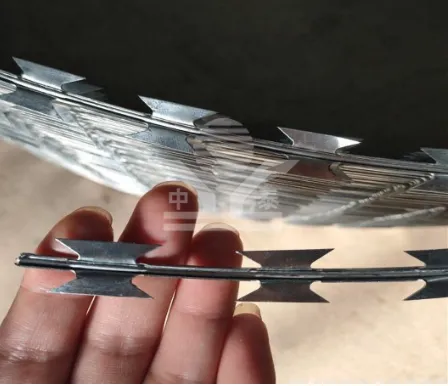Different Types of Wire Fencing
Wire fencing is an essential part of agricultural and residential properties. It serves various purposes, such as containing livestock, securing gardens, or delineating property boundaries. When selecting wire fencing, it’s crucial to consider the type that best meets your requirements. Here, we explore several common types of wire fencing, their applications, and benefits.
1. Barbed Wire Fencing
Barbed wire has long been a popular choice for agricultural purposes, especially in cattle ranching. It consists of two or more strands of wire twisted together, with sharp barbs spaced regularly along the wire. The primary function of barbed wire is to deter large animals from crossing boundaries. It’s relatively inexpensive and easy to install, making it ideal for ranchers seeking an economical solution for perimeter fencing.
However, while barbed wire is efficient for keeping livestock in and intruders out, it’s not the safest option for areas frequented by children or pets, as the sharp barbs can cause injury.
2. Welded Wire Fencing
Welded wire fencing features a grid pattern of horizontal and vertical wires that are welded at intersections. This type of fencing is known for its strength and durability. Welded wire is often used for gardens, animal enclosures, and commercial properties because it can effectively keep smaller animals out while allowing visibility.
One of the significant benefits of welded wire fencing is that it’s often coated with vinyl or galvanized for added resistance against rust and corrosion, increasing its lifespan. Additionally, it comes in various heights and mesh sizes, allowing for flexibility based on specific needs.
3. Chain Link Fencing
Chain link fencing is an ideal choice for those seeking a balance of security, visibility, and affordability. This type of fencing consists of interlocking steel wires that form a diamond pattern. It is commonly seen in residential, commercial, and industrial applications due to its versatility.
different types of wire fencing

Chain link fencing is available in various heights and gauges, providing options for different levels of security. It also allows light and visibility while effectively enclosing an area. The primary downside is that it might not provide the aesthetic appeal some property owners desire, but it can be enhanced with slats for privacy.
Electric fencing uses a series of charged wires to deter animals from crossing a boundary. It’s especially popular in agricultural settings for controlling livestock. Electric fences can be temporary or permanent and are often used in conjunction with other types of fencing.
The main advantage of electric fencing is its ability to contain animals without solid barriers. This type of fencing can be highly effective, as the shock received by animals serves as a strong deterrent. However, proper installation and maintenance are crucial to ensure it operates safely and effectively.
5. Poultry Fencing
Poultry fencing is specifically designed for birds and includes features that prevent smaller animals from entering the enclosure. The mesh used in poultry fencing is finer than standard wire to prevent chicks and small birds from escaping while still providing visibility and ventilation. It is usually made of chicken wire or hexagonal wire mesh.
The advantages of poultry fencing are its low cost and ease of installation. However, it’s vital to secure the bottom of the fence to prevent digging predators from getting into the enclosure.
Conclusion
Choosing the right type of wire fencing depends on the specific application and requirements of your property. Each type offers distinct benefits, whether you need to secure livestock, protect gardens, or maintain property boundaries. Barbed wire, welded wire, chain link, electric fencing, and poultry fencing each serve unique purposes that can cater to different needs. Careful consideration of your objectives, combined with an understanding of the advantages and disadvantages of each type, will help you make an informed decision on the best fencing solution for your property.
-
Turn Down the Noise: The Future of Highway Sound Barriers
NewsApr.09,2025
-
Silence the Sound: The Power of Highway Noise Barriers
NewsApr.09,2025
-
Reduce Road Noise Effectively with Highway Noise Barriers
NewsApr.09,2025
-
Noise-Free Living: How Highway Barriers Make a Difference
NewsApr.09,2025
-
Engineered for Silence: Highway Noise Barriers for Every Road
NewsApr.09,2025
-
Effective Noise Control: Highway Barriers for a Quieter Tomorrow
NewsApr.09,2025
Subscribe now!
Stay up to date with the latest on Fry Steeland industry news.

